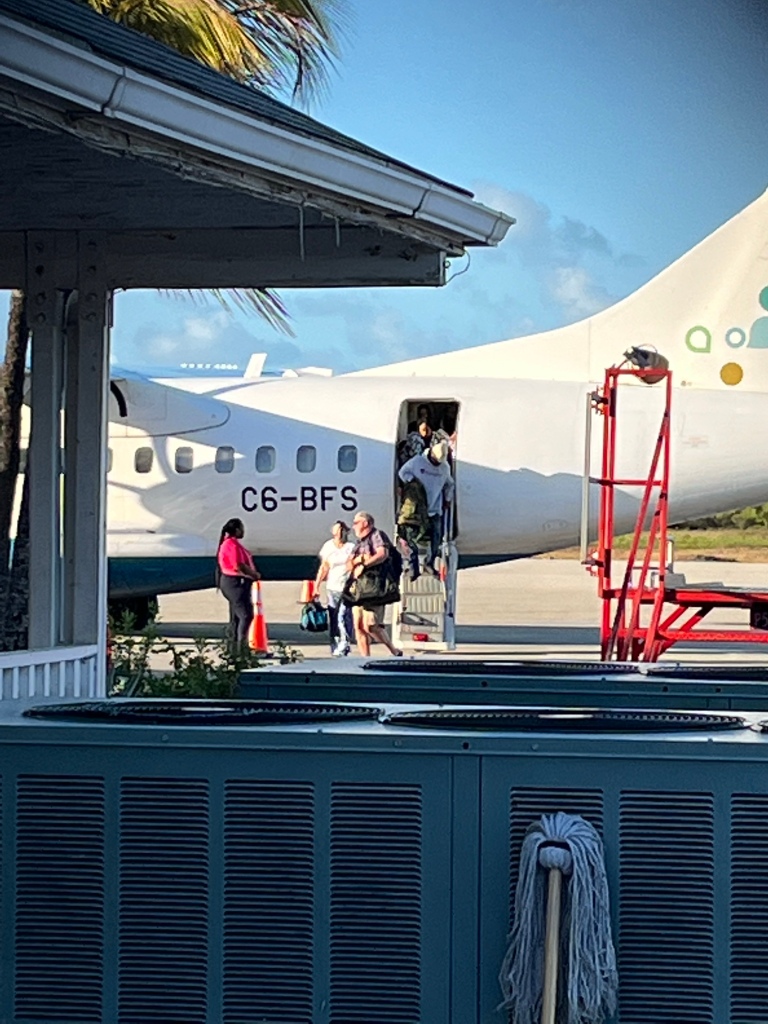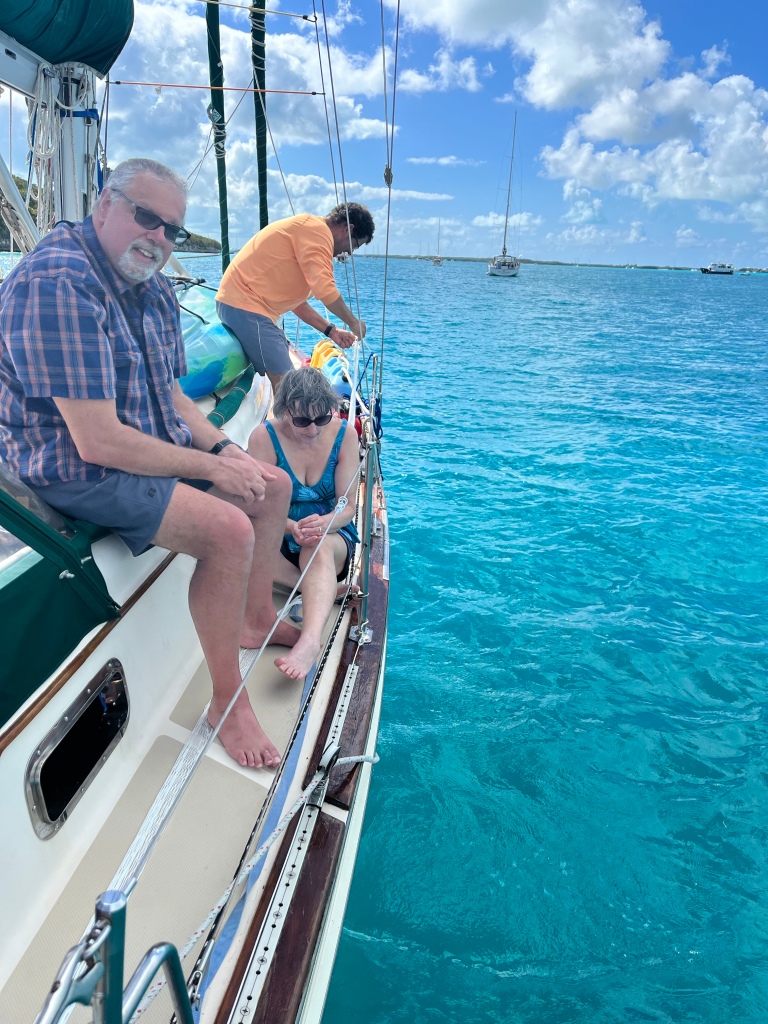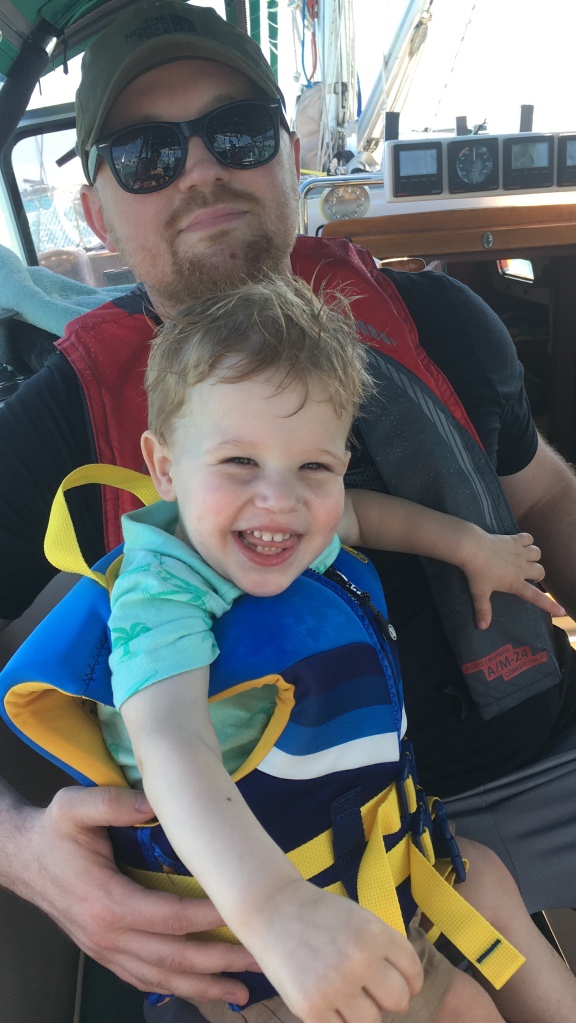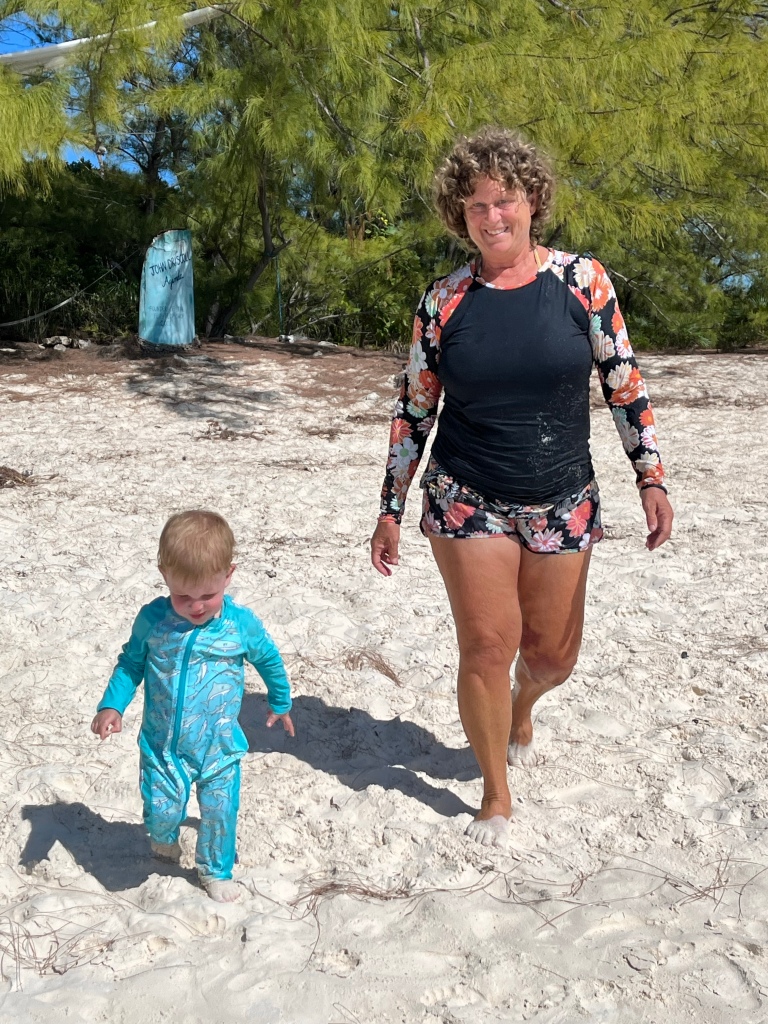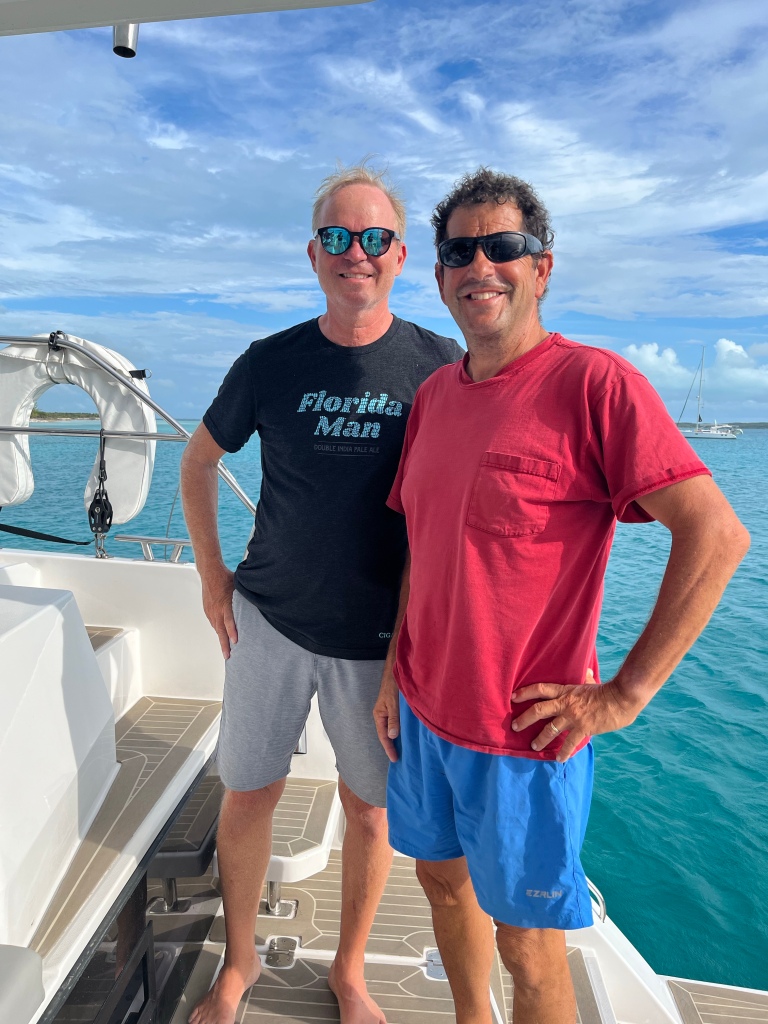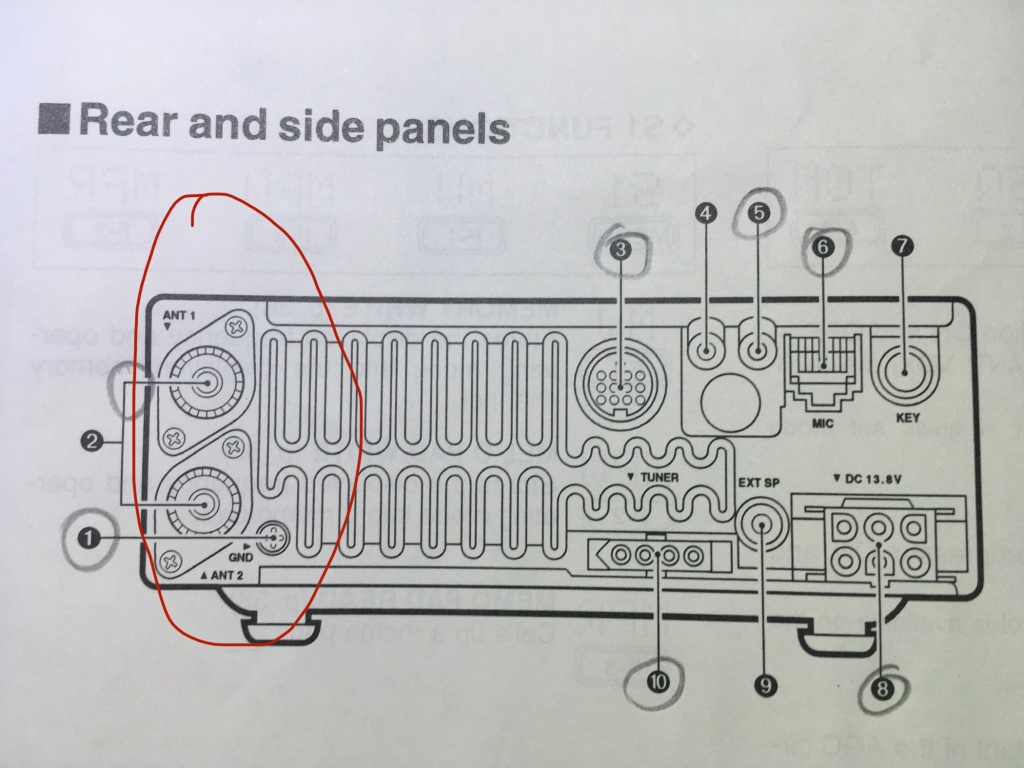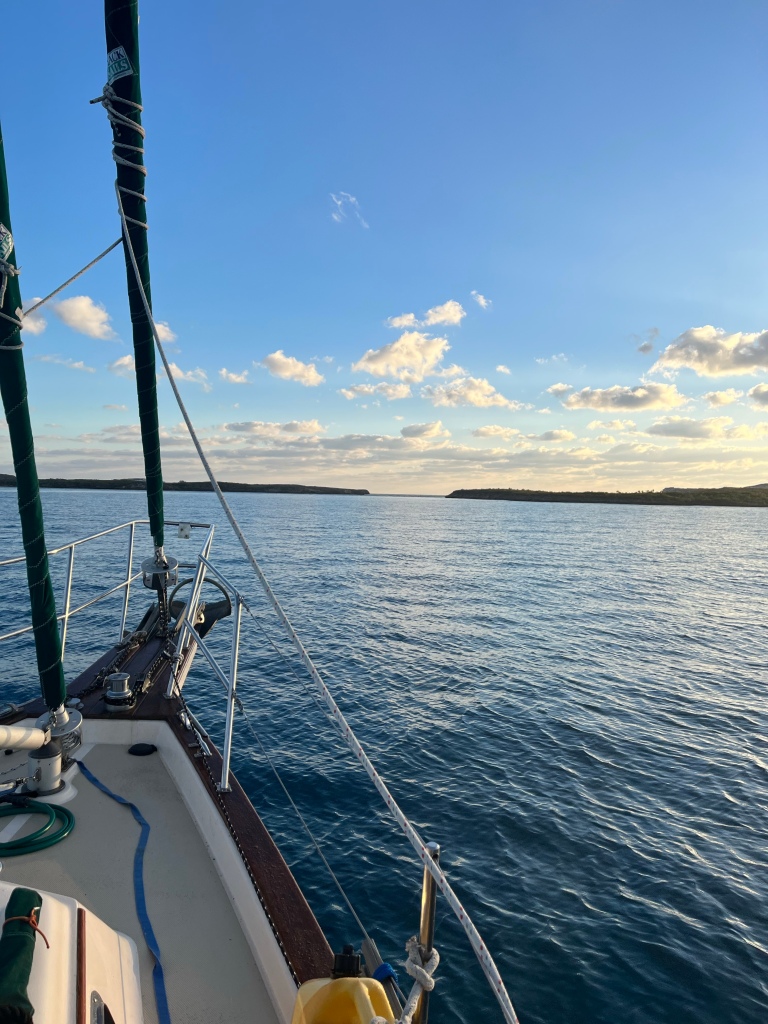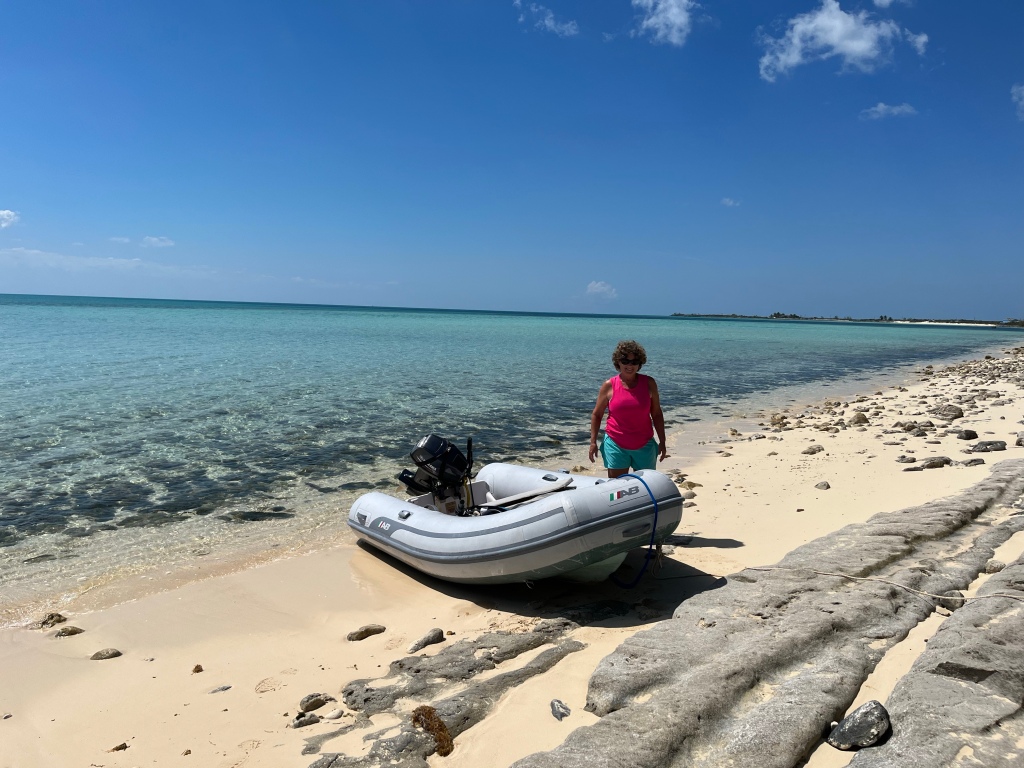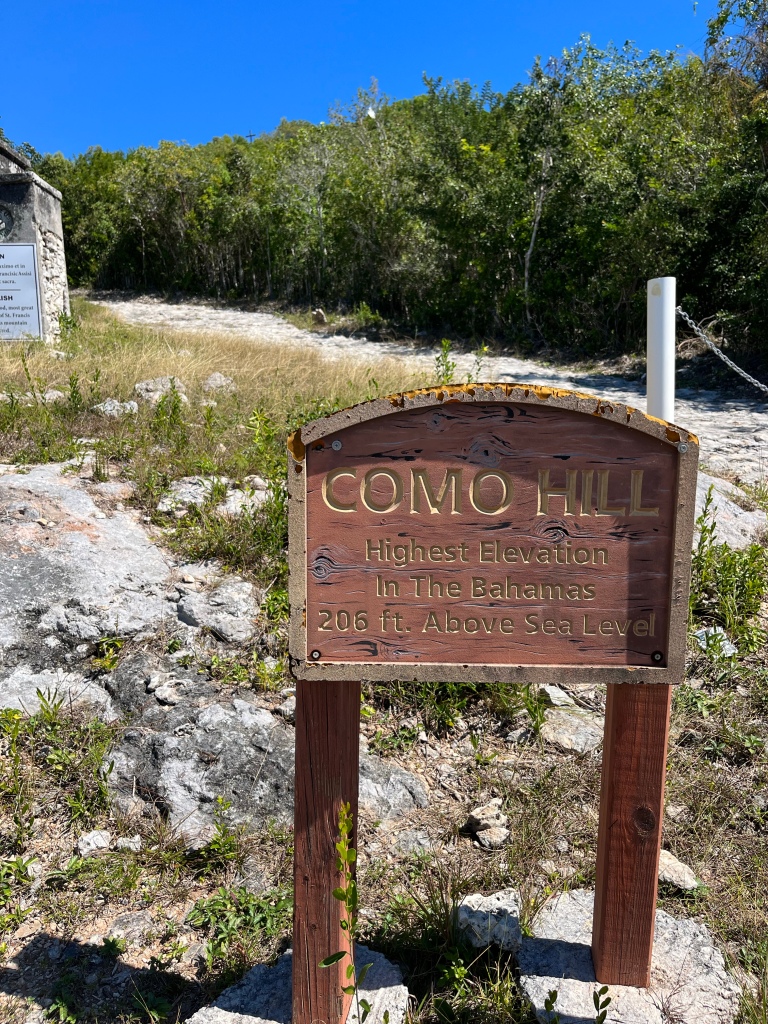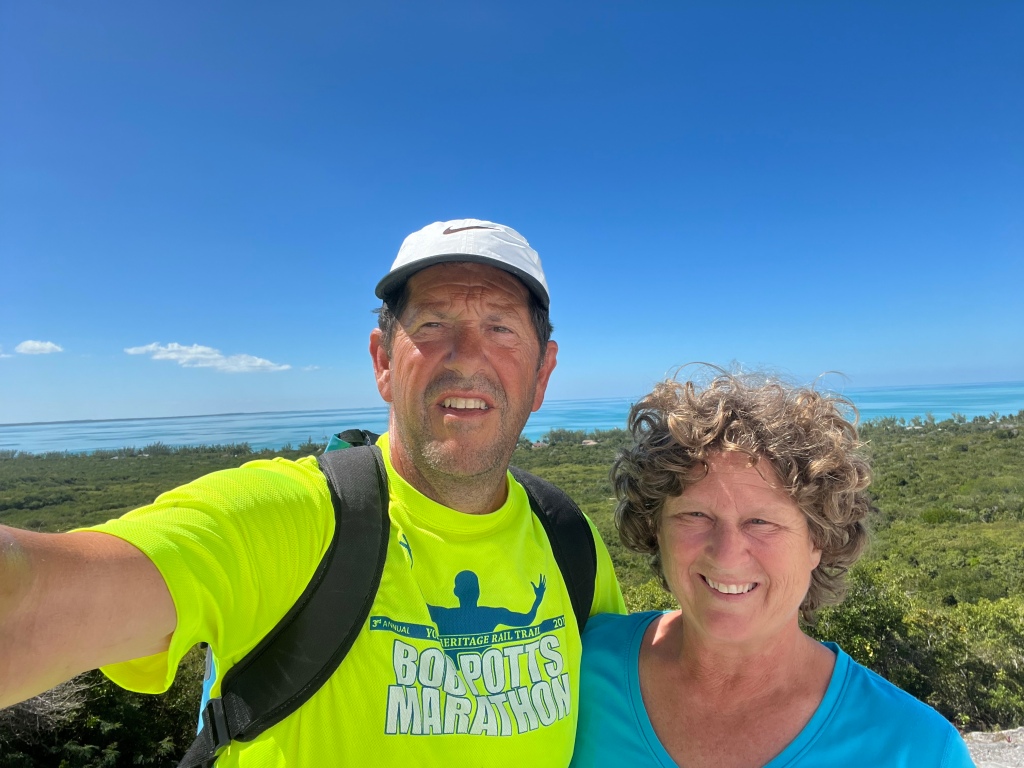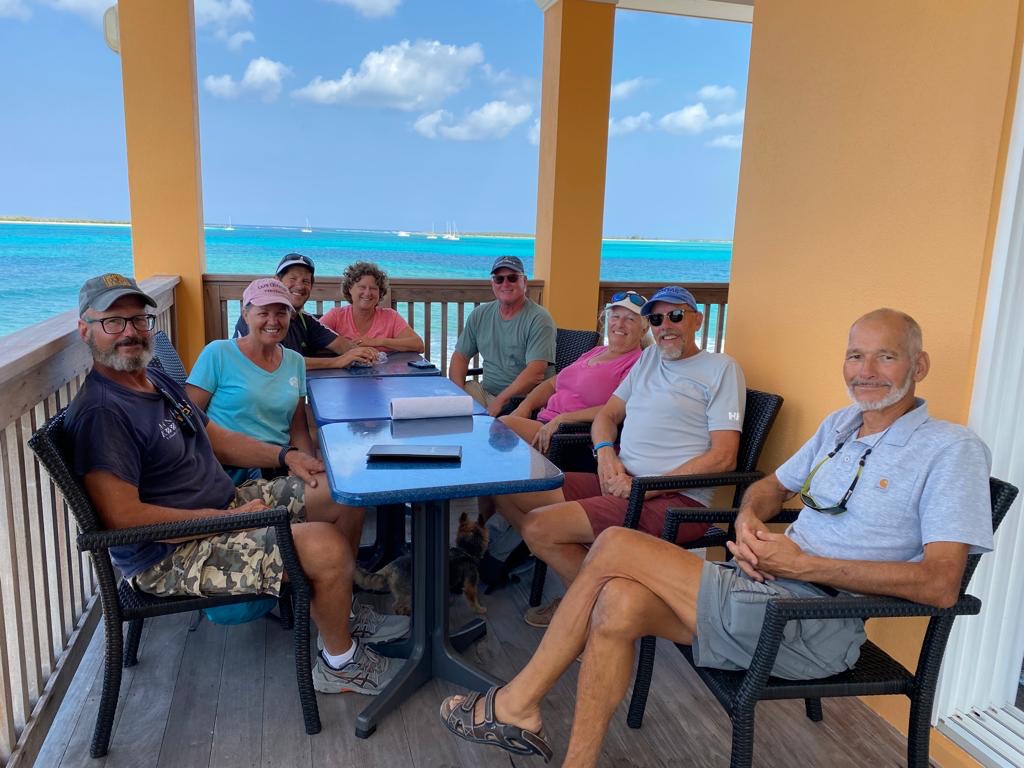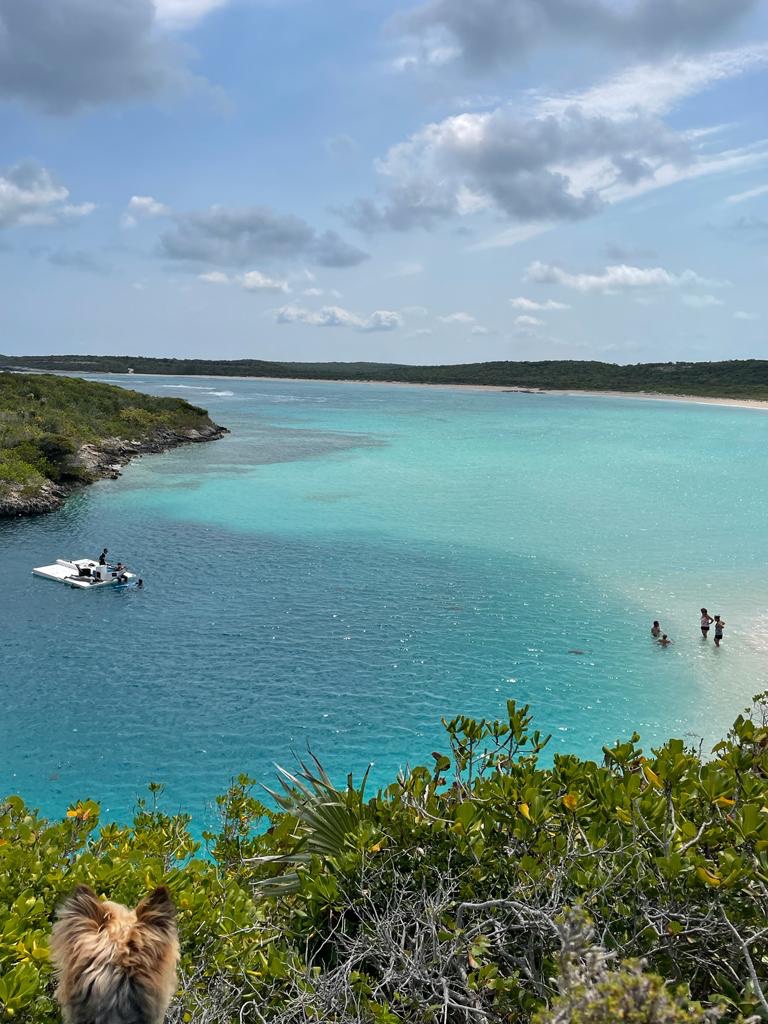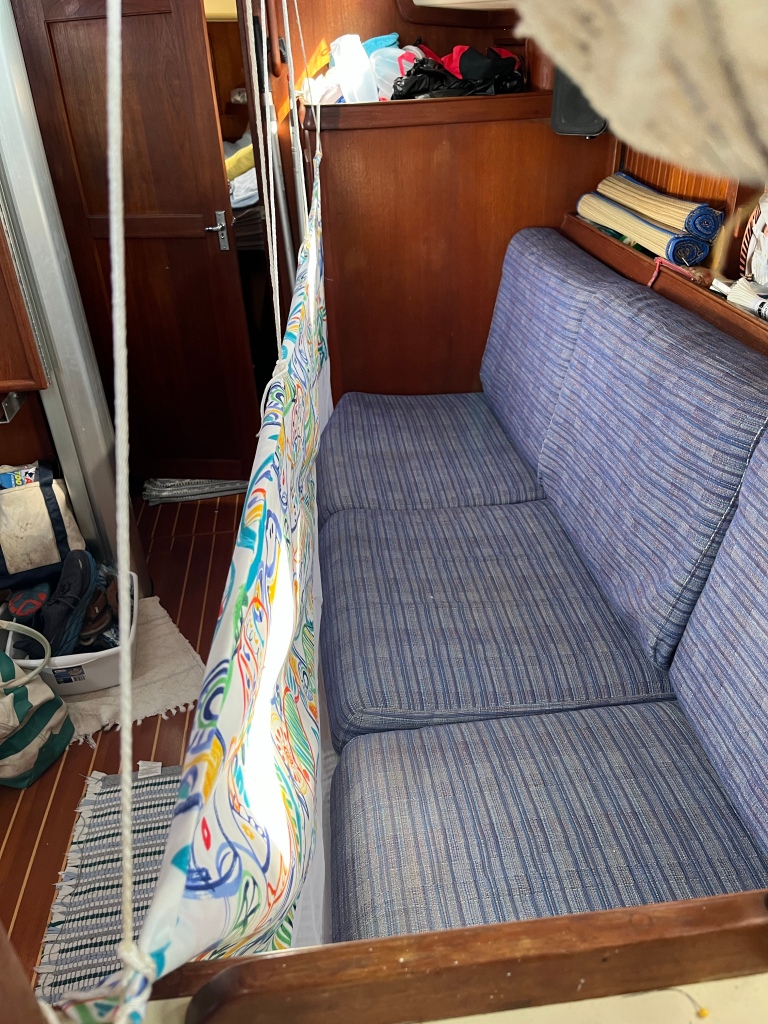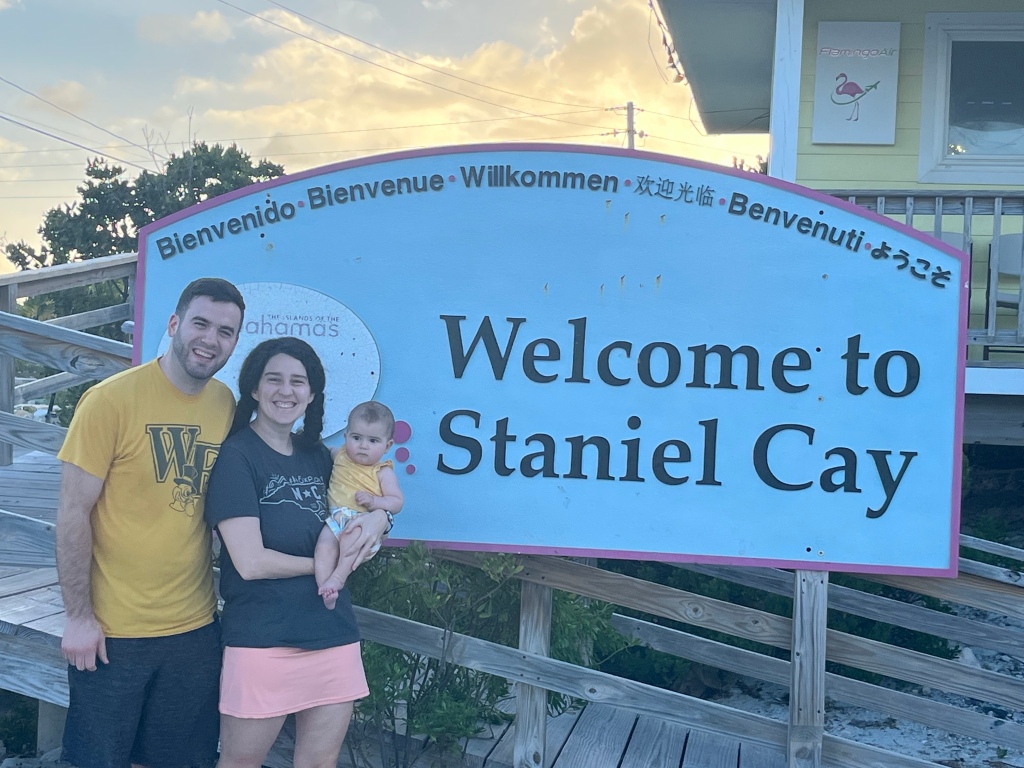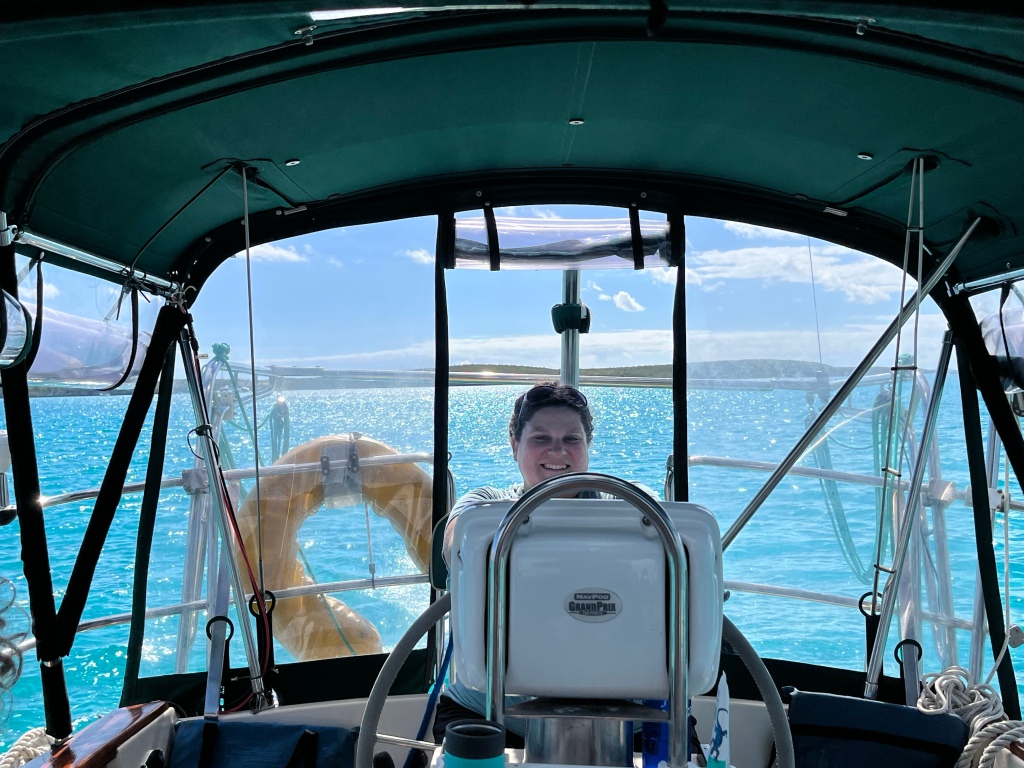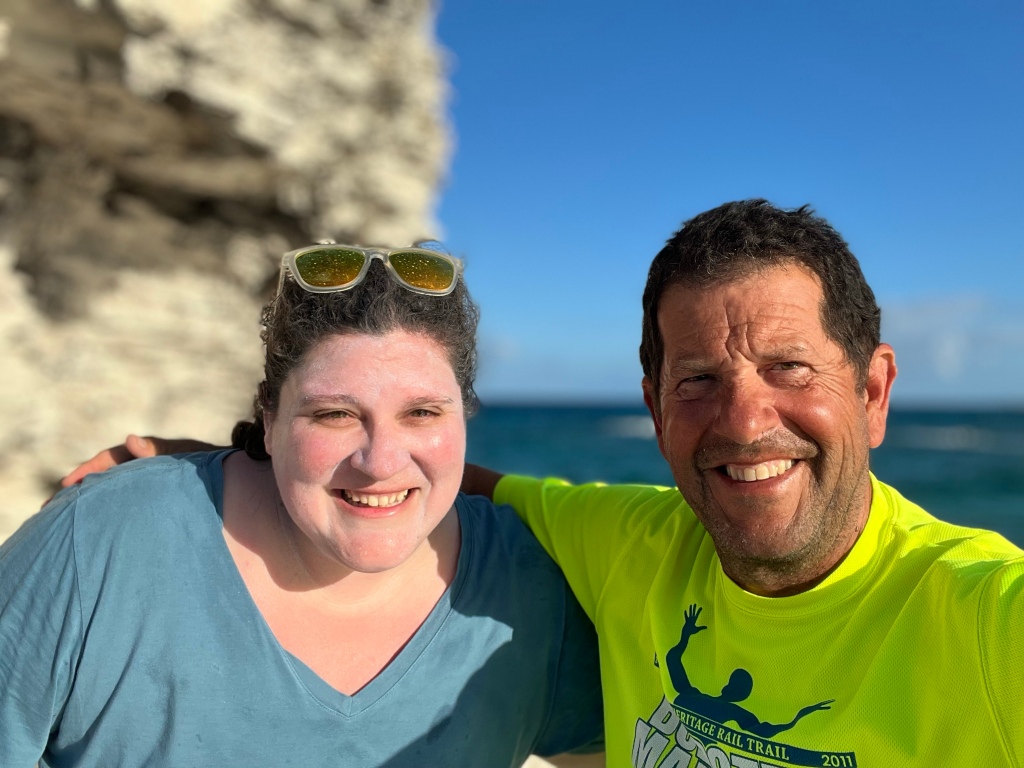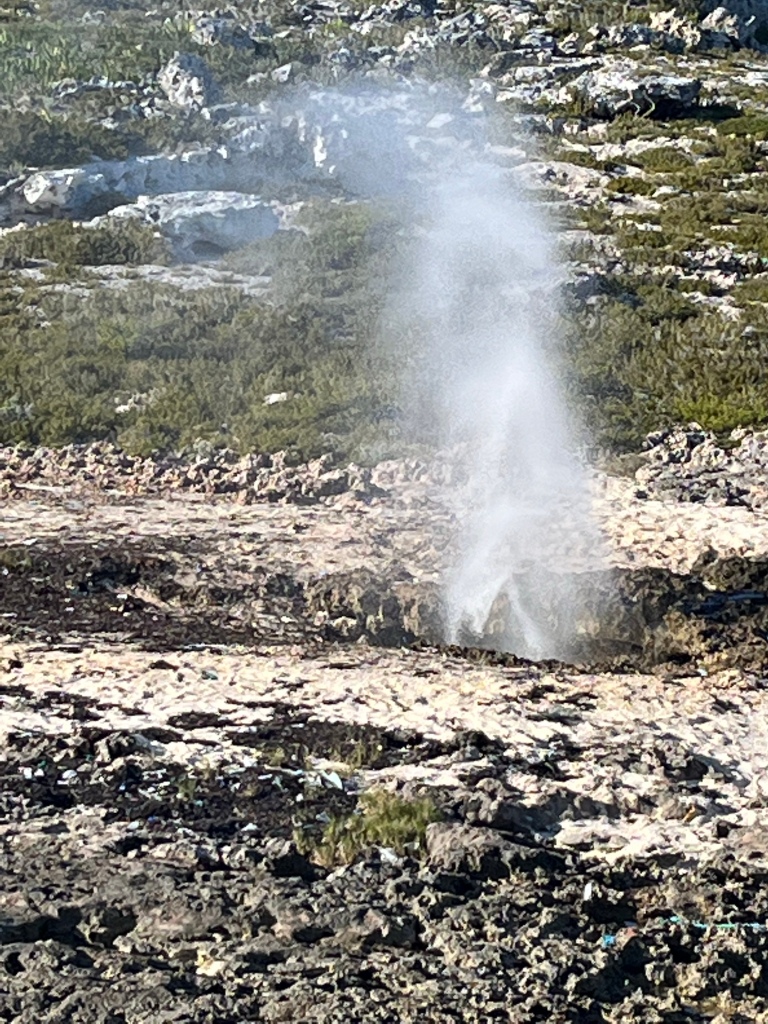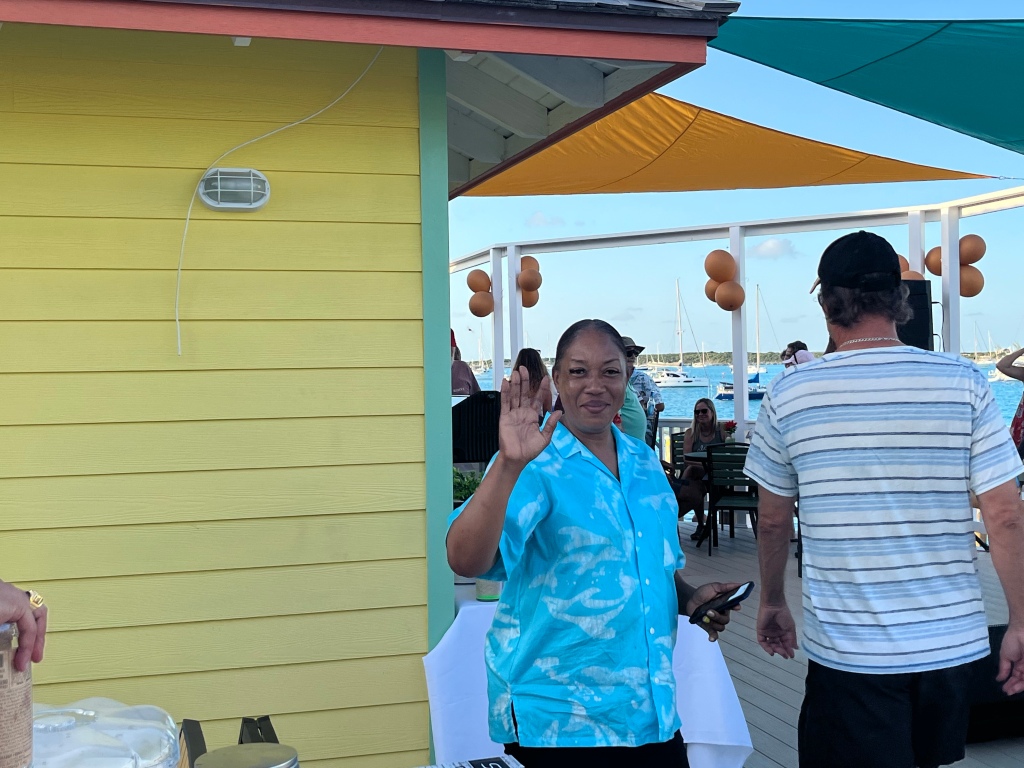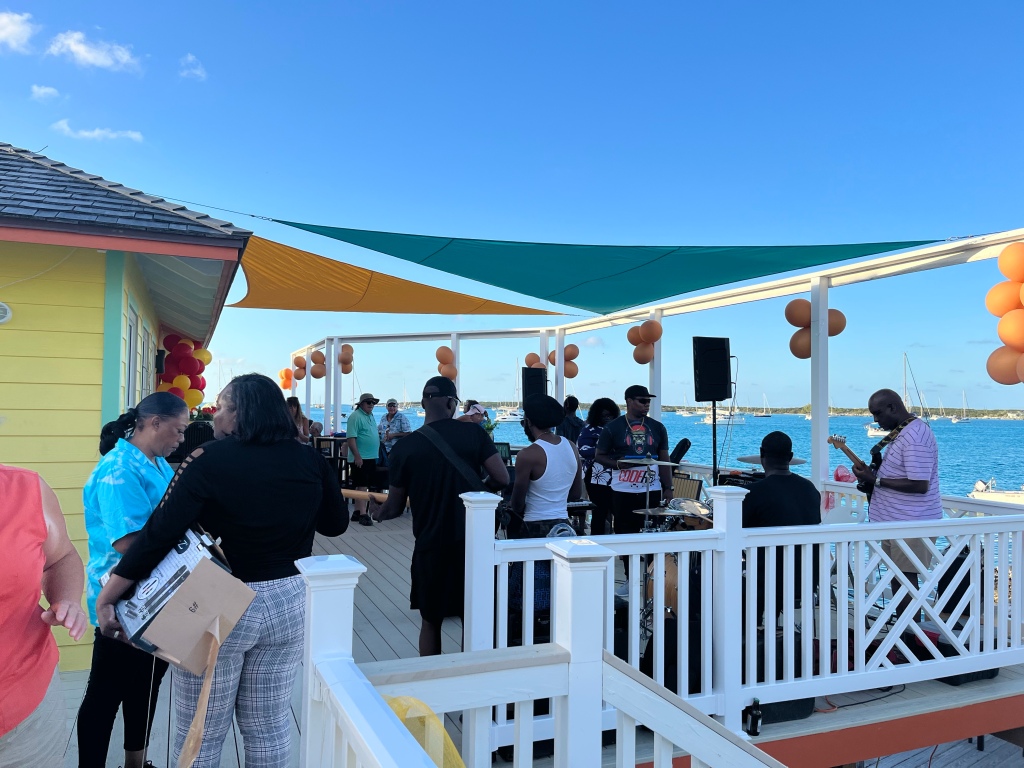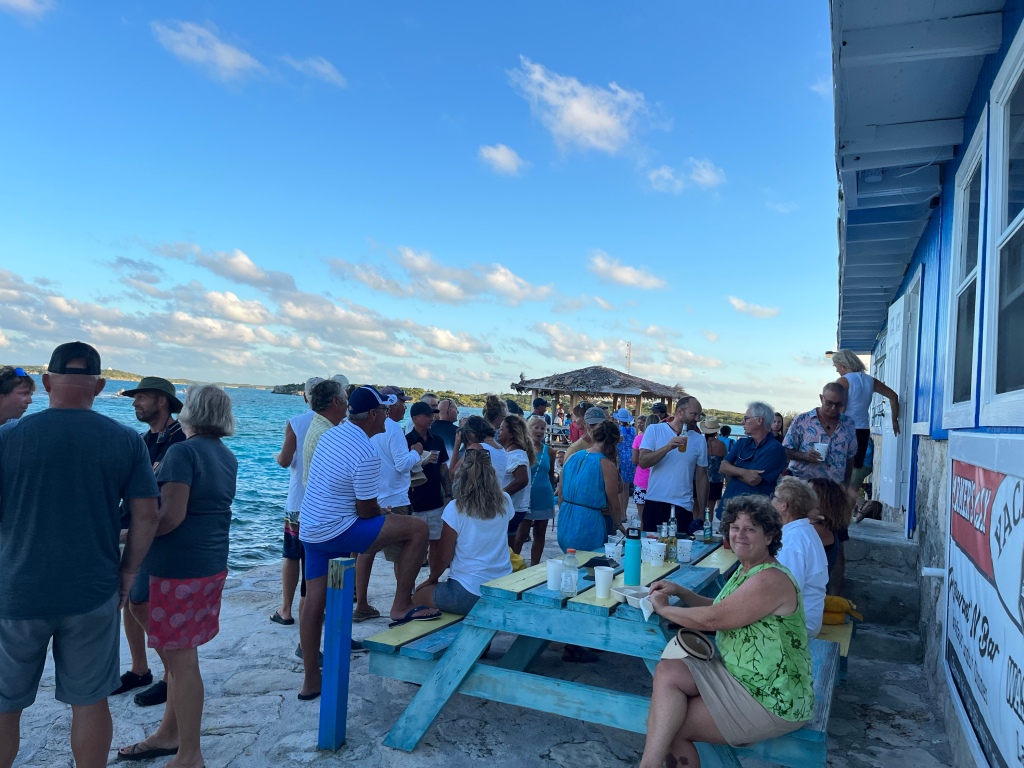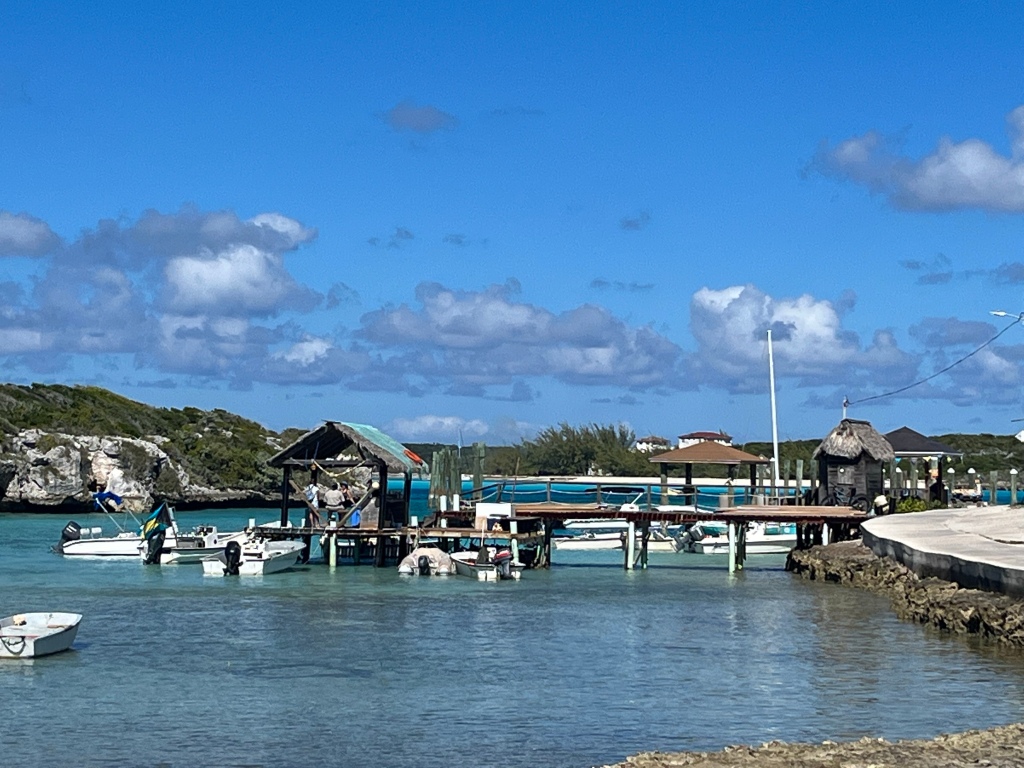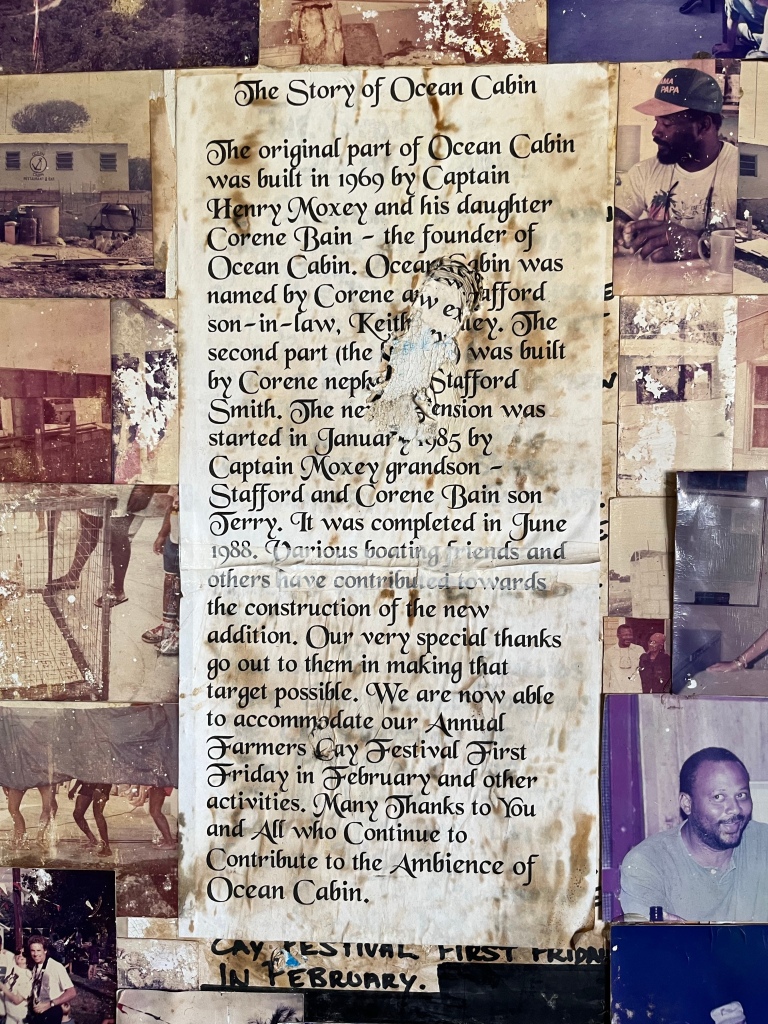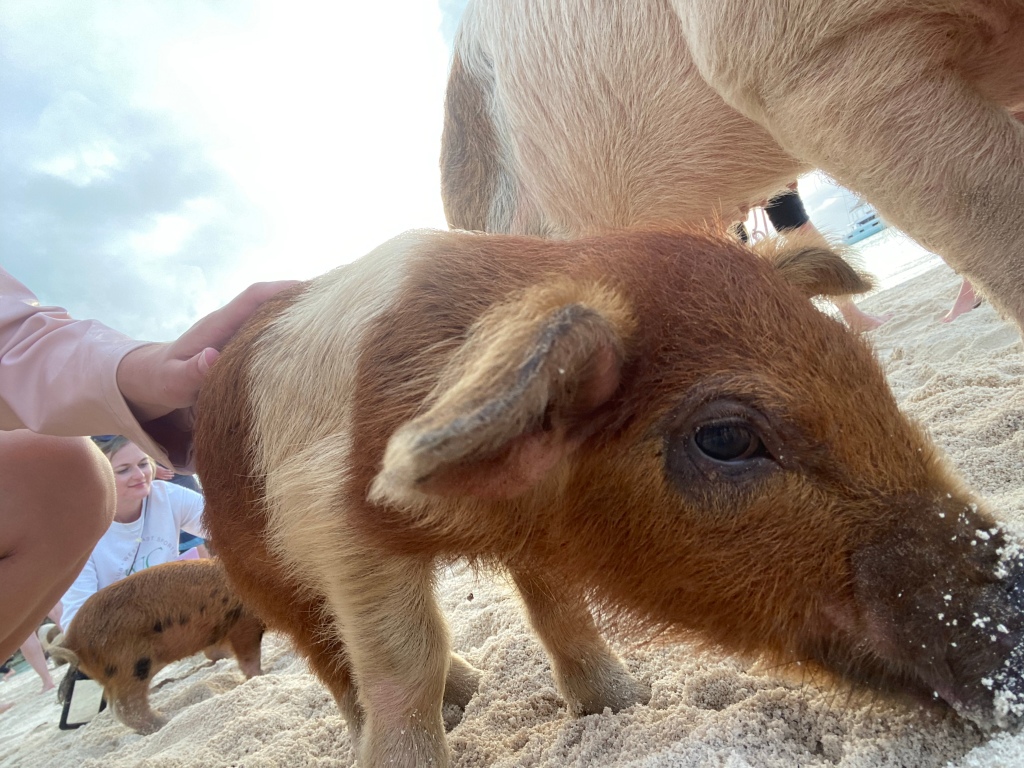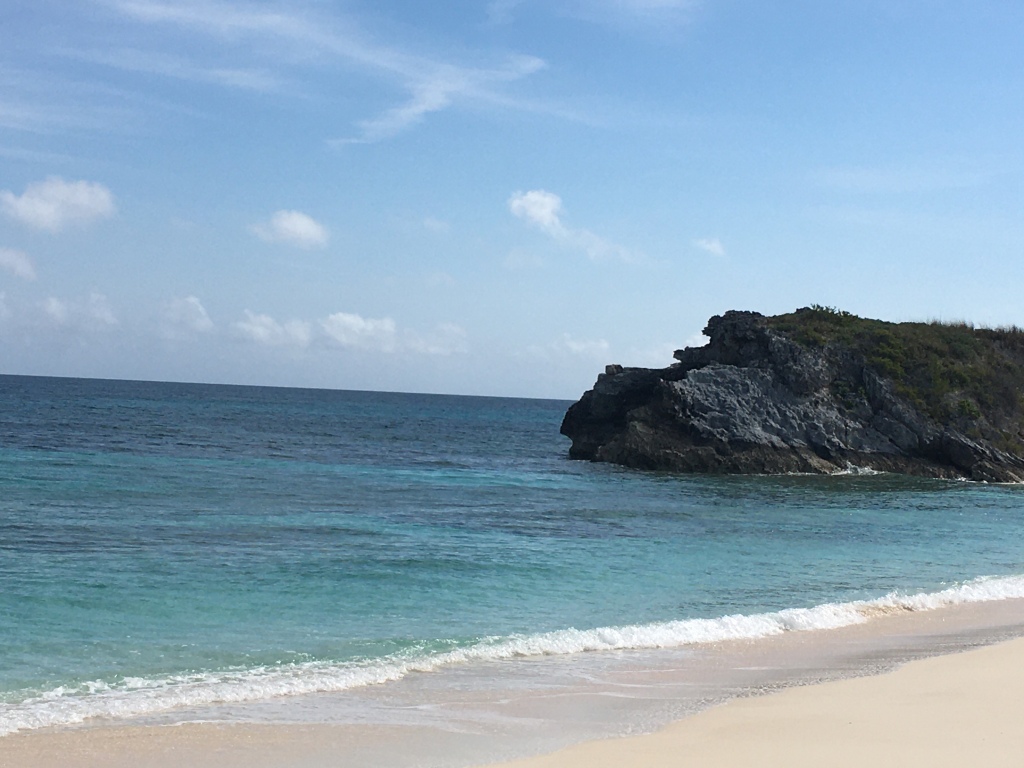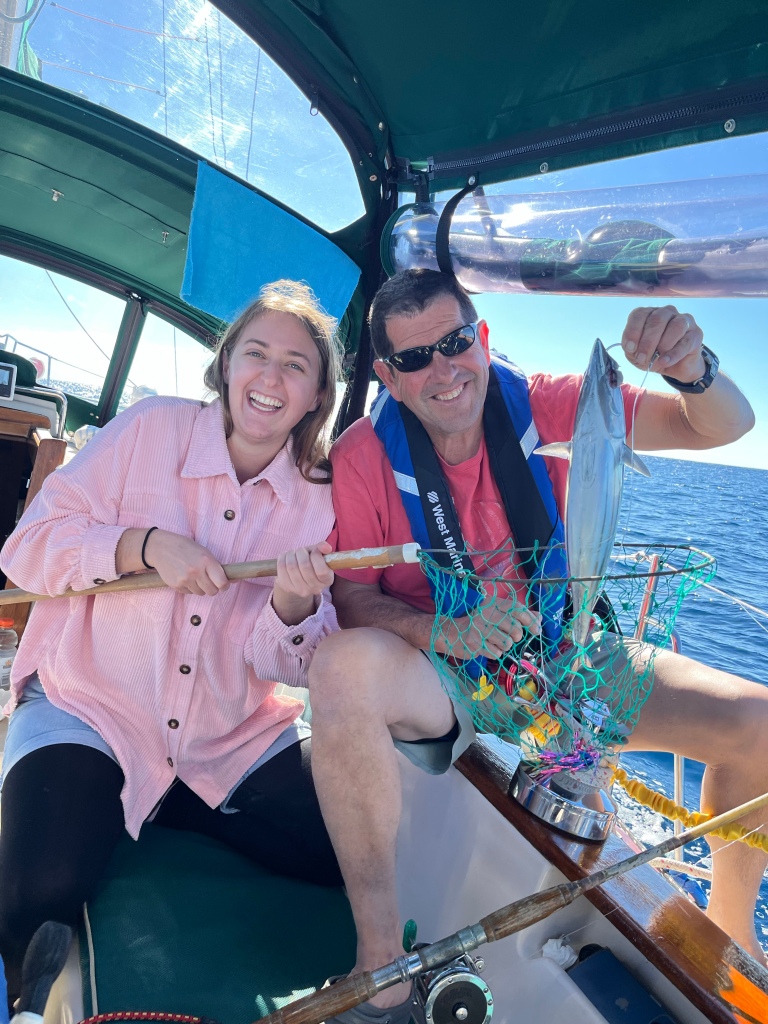After leaving York the end of October and spending a little over 3 months in the Bahamas, it was time for us to begin heading home. We are looking forward to being back in York. Although, for those of you that know us well, know that even when we are at our home in York it’s rarely for more than a week or two at a stretch before we head out again to see family or friends!
We left Georgetown in the southern Exumas on Friday the 14th and headed 40-50 miles north to the settlement of Black Point. The daysail north was a uneventful smooth motorsail and we were safely anchored before sunset. We spent Saturday morning on a Zoom call, then went to shore and did 3 to 4 loads of laundry, and capped the day off with a nice dinner at Lorriane’s.
Sunday morning at 4am we raised the anchored and headed northwest. It was going to be a 15 hour, 70-80 mile sail and we wanted to be anchored before thunderstorms were predicted around sunset. Our destination was West Bay, a good sized anchorage located on the western end of New Providence Island (Nassau is the largest city on the island). From there we would either head north up to the Berry Islands and wait for a good weather window to cross back to the states, or we’d continue west to Morgan’s Bluff which is located on the northern tip of Andros Island (there are no large towns or cities on this island even though by size, it is the largest island in the Bahamas). Regardless which island we headed to, we wanted to make sure we stopped where we could get fuel and be able to top up our tank before our crossing. Diesel should be available at either of these two islands.
During our passage from Black Point to West Bay we dodged a few thunderstorms and even saw two water spouts. Fortunately, we were able to see them far enough off in the distance and adjust our course so that we didn’t cross paths. Winds in the spout itself can be over 60-80 mph, like a small tornado, so you definitely don’t want to have one come directly over your boat (or even near it).



Other than waterspouts and threatening thunderstorms on the horizon, which lasted all day long, it was an uneventful passage! On another note the weather provided us an opportunity to sharpen our skills using our radar to identify and track storms.

There were more storms forecasted for our area Monday the 17th, so we ended up staying put at anchor all day and took advantage of the time to continue to prepare Eos for our eventual Gulf Stream crossing later in the week. In the evening, several large thunderstorms did pass by our area. While they didn’t pass directly over us, we were treated to a few hours of a pretty impressive lightening show and were glad we weren’t out in the middle of them.

As so often is the case when sailing, the wind direction for the day on Tuesday ultimately ended up being the determining factor in whether we went to back to the Berrys or to Andros. Since we wanted to sail most of the day, heading to Andros was going to be the best point of sail. So off towards Andros we sailed.
We had a great sail to Andros and ended up anchoring just after 2 o’clock in the afternoon.
Once our anchor was set, I called the local fuel station to make sure they were open and did in fact have diesel fuel. I caught the attendant just in time, as he said they were heading out to lunch around 2:30, but would be back by 3 and he did confirm they in fact did have diesel fuel.

Since we were anchored out, before heading to shore to get fuel we needed to lower the dinghy and put motor on. This is a task we do all the time, but after over three months of lowering the dinghy to go ashore and then restoring it again before heading out, we were getting tired of this task. (I’m sure you all are really sympathetic to this hardship we have to endure!)
Anyway, we launched the dinghy, grabbed our two five gallon jerry jugs and headed to the dock so that we would be there shortly after 3. This being the Bahamas and everyone operating on ‘island time’ we knew that ‘we’ll be back by 3’ really didn’t mean 3. Probably closer to 3:15 /3:20. So being there just after 3 meant we would only be waiting a few minutes.
When 3:30 rolled around and the attendant hadn’t returned, I was getting a little nervous. By 3:40, I was getting annoyed and becoming anxious. I figured we needed just under 20 gallons to fill up our tank and with only 2 five gallons jugs, we’d need to make 2 trips. Knowing that closing time was 5pm and ‘island time’ for closing never means closing later unless it’s a bar, we were quickly running out of time.
Fortunately the attendant showed back to work a little before 4 and filled us up first ahead of the cars that had begun to line up. We carried 10 gallons back to the dinghy (about a 1/4 mile walk), motored back to the boat, and quickly poured them into our tank.
We then motored back to the dinghy dock, walked back to the gas station and arrived around 4:40-4:45ish. Much to our relief, the attendant was still there and the station was still open!
We filled the jugs back up with another 10 gallons and took them to the dinghy. Rather than head straight back to Eos, we decided to see if we could find somewhere to get some conch fritters and or cracked conch as this would likely be the last time we would be ashore in the Bahamas this season. Fortunately there was a small sports bar nearby that was open and did in fact serve both.



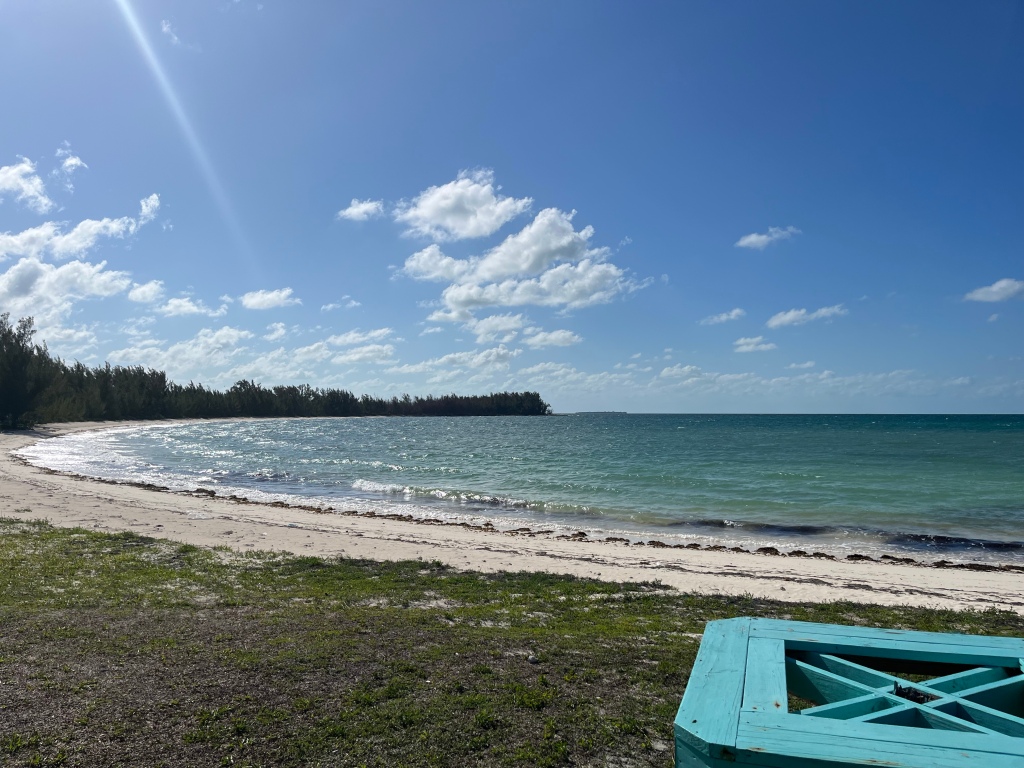
After enjoying our last meal of conch for the year, we took a short walk around the harbor to check out the facilities in case we decide to come back here in the future. During our walk we did meet some fellow cruisers who had tied up along the municipal pier in the harbor. While the harbor didn’t have anything to offer like laundry or restrooms, it did provide great all weather protection and only charged $7 a day (total!). Not a bad deal considering most marinas in the Bahamas typically charge somewhere between $2-4 s foot/per night. (For Eos that would be $75-150 a night- plus taxes and other fees)
We eventually made it back to Eos, topped off the fuel tank, and restowed the motor and dinghy for our upcoming passage. Then we turned in for the evening.
As we’ve written about in the past, while out here cruising the weather and upcoming forecast play a huge part in determining what we can do during the upcoming week. Ideally, we’ve been looking for a weather window that would allow us to leave the Bahamas and sail 2 1/2 to 3 days offshore and return to the US somewhere around Charleston, SC. Allowing us to avoid a week or so of mostly motoring north on the ICW.
Unfortunately the forecasts for the next week or so were not looking good. The only windows for favorable crossing of the Gulf Stream continued to be less than 24 hours in duration followed by a few days of winds out of the north (the direction we would be traveling) along with afternoon or evening thunderstorms with gusts of 40-50mph. While we don’t mind a little ‘salty sailing’ those conditions didn’t sound good at all.
So we changed plans.
Rather than waiting for a window to make landfall near Charleston, we decided to position ourselves to take advantage of a short window that was coming up on Friday to cross over to Florida. To make the most of the opportunity we wanted to be a little further north in the Bahamas so that we when we crossed over on Friday we’d be at least north of Fort Lauderdale or Stuart Fla.
So on Wednesday morning we got underway and decided to sail overnight up to West End, which as its name indicates is located on the western end of Grand Bahama Island (home of Freeport) in the northern most part of the Bahamas.
Although the conditions were relatively calm and the winds fairly light, we were able to sail well over half of the 130 mile, 28 hour, passage north without the engine on at all. So we only used about 5 gallons of fuel.
We anchored off West End shortly after lunch, took a short nap and then spent some time finalizing our passage plan for the next day.
Leaving from West End, we had several options for making landfall in Florida where there would be a good port of entry (deep and wide enough that you can safely enter in almost all conditions). We could go directly across from West End to Lake Worth, a little further north to Stuart, or up the coast more to Fort Pierce, Cape Canaveral, St. Augstine, or potentially as far north as Fernandina Beach at the Florida Georgia boarder.
We looked at each of these options, and considered the time it would take to get there, our anticipated arrival time, along with the timing of forecasted thunderstorms arriving late Friday or Saturday in Florida.
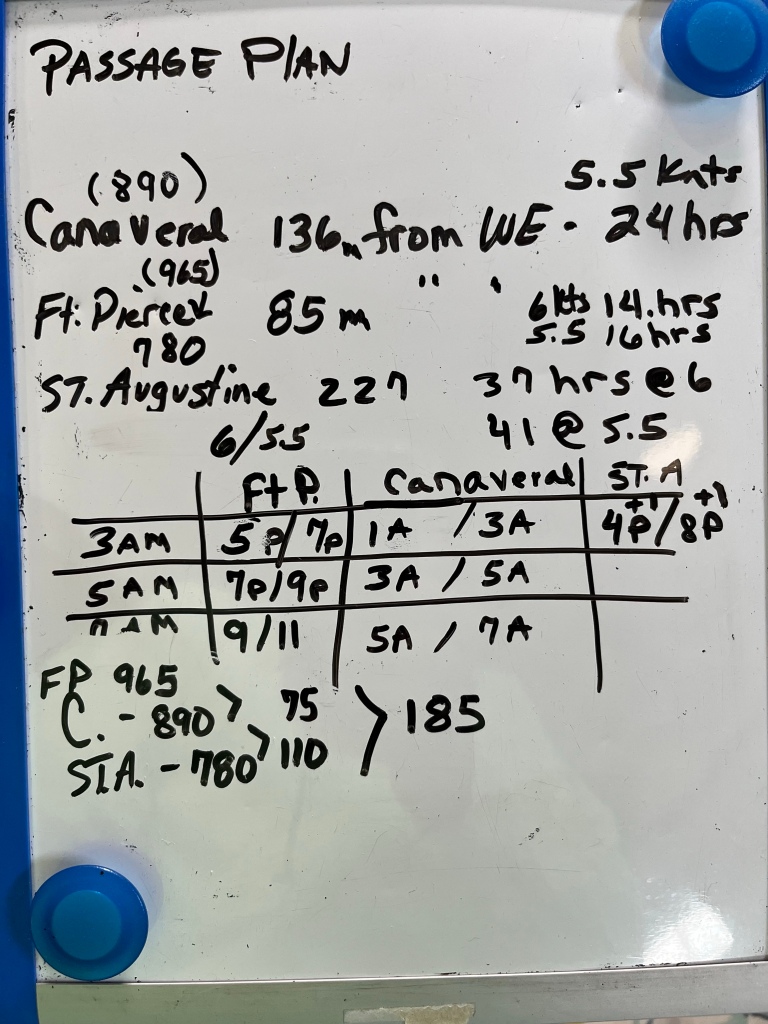
Ultimately we decided on crossing to Fort Pierce. Doing so would allow us to get some more rest, make an early morning (4am) departure and reach Fort Pierce in the late afternoon.
With our decision made, we checked to make sure everything was still secured for an offshore passage, completed a few administrative tasks for clearing back in with US Customs and Immigration, enjoyed a nice meal and turned in.
Three thirty came pretty early, but we were ready. We made our coffee and had an early breakfast and were underway just before 4am.
Apparently, we weren’t the only ones with the same plan to take advantage of this short weather window. Over the course of next two or three hours, we saw at least a dozen or so other boats leaving West End and heading west to Florida, all going to Ft. Pierce.
Once again, we were blessed with great weather for crossing the Gulf Stream and even though we didn’t have a single bite on our fishing line, we had a great crossing.

The most ‘challenging’ part of the trip was our entry into the Fort Pierce channel. We ended up arriving to the channel just as the tide was at its maximum strength flowing out (max ebb current) and the wind was blowing directly into the out-flowing water. This condition (wind against current) is less than ideal for entering and one you typically try to avoid. Unfortunately, I had miscalculated the timing of max ebb flood and was already part way down the channel before I saw that it was going to be a ‘sporty’ 10 minute ride in.
Fortunately, Eos handled the rough surf well and we were able to make it through the channel without incident. Although, it did feel like it took forever to get in.
We were anchored in Fort Pierce and back in the US by 5:30 and ready to rest. We submitted our customs and immigration information online and immediately received notice our information was ‘being reviewed’.


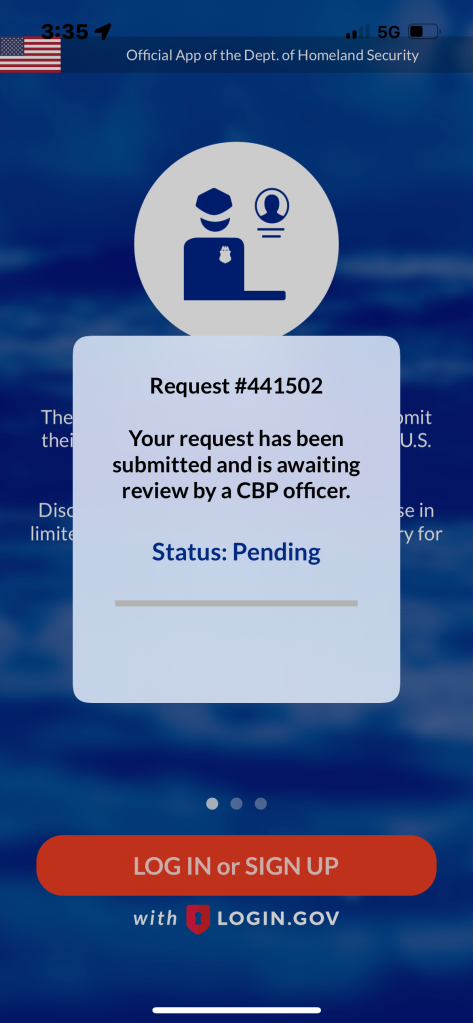
Throughout the evening the status never changed so we went to bed without knowing if we were cleared or not to begin heading north.
When we awoke Saturday morning we finally received notification and that our information was approved. We received a nice message from US Boarder Patrol that our trip was approved and they told us to ‘enjoy your stay’. We were expecting a ‘welcome home’ but we’ll take an ‘enjoy your stay’. (Maybe they knew this crew never stays put very long)

So as of Saturday April 22nd we’re back in the US and cleared to continue our trip home.
Thanks again for your prayers and we look forward to updating you on our progress north before too long and hopefully seeing you in person.
